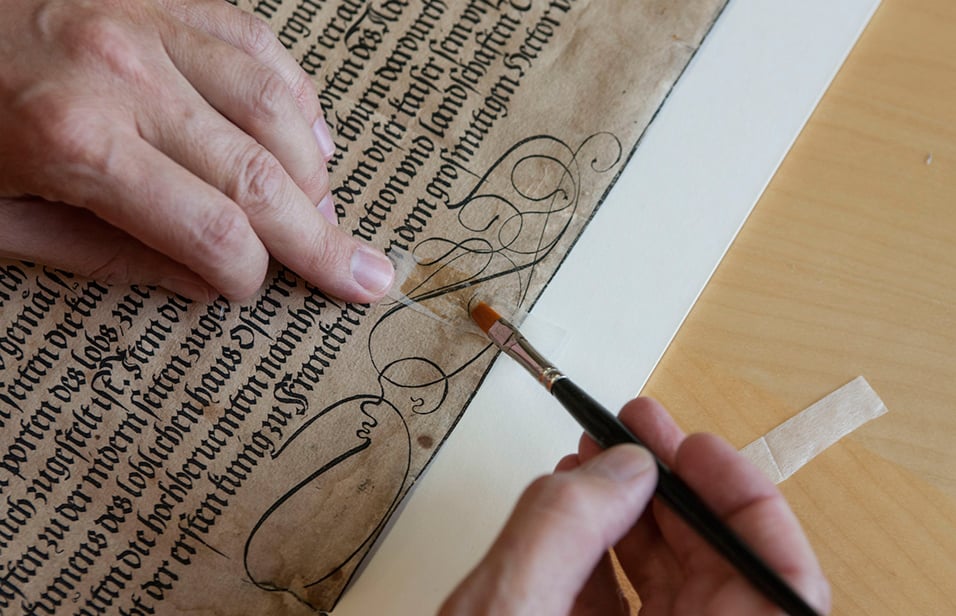Art & Exhibitions
Massive Dürer Print Undergoing Painstaking Restoration


Sarah Cascone

This fall, visitors to the National Gallery of Denmark can see conservators at work on Albrecht Dürer’s The Arch of Honor of Maximilian I, the largest woodcut print made during the Renaissance. The delicate artwork, over 9 feet wide and 11 feet tall, is made from 36 separate sheets of paper, printed from no less than 195 wooden blocks. It is being repaired in anticipation of a spring exhibition organized by Denmark’s Royal Collection of Graphic Art.
Commissioned by Maximilian I, the Holy Roman Emperor, to honor his family, and created by Dürer and his workshop between 1512 and 1515, pages of The Arch were initially stored individually in a binder. In the mid-19th century, however, they were glued together on a single canvas by the Royal Collection of Graphic Art. In the 16th century, such multi-sheet prints were usually used to decorate walls, and were often hand-colored.
Over the years, the piece had deteriorated due to exposure to light and changing climate conditions. Eventually, the museum had to remove the massive artwork from view, and it has been in storage ever since. Restoring the work to its former glory is no easy task, but conservators have opened the process to the public, allowing visitors to observe and ask questions as they painstakingly separate the individual pages, carefully cleaning each one, mending tears and repairing other damage.

Albrecht Dürer, The Arch of Honor of Maximilian I.
Photo: Wikimedia Commons.